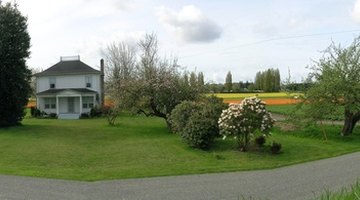Teaching agriculture to young, primary school students opens them to understanding how things grow, live and die. From flowers to potatoes, from cows and pigs to tractors and soil, teaching students about farming and gardening introduces knowledge about how, for example, food gets onto their tables, clothes get onto store shelves, and seeds germinate. Starting agricultural education at a young age helps children get perspective on their lives and the world around them.
Basic Science
Teaching agriculture in primary school classrooms introduces young students to basic scientific procedures and shows them how to apply these lessons to daily life. For example, an agriculture instructor can teach students about how bees make honey, how trees grow and make fruit or nuts, and how corn can be made into oil, for example. Agriculture puts chemistry, biology and physics into everyday-life application.
School Gardens
School gardens planted by primary school students serve as environmental and agricultural educational tools. Planting flowers, potatoes, tomatoes and trees teaches elementary school students about how things grow, live and die. Gardens also can help young students develop personally and socially by adding a practical dimension to these agricultural subjects.
Nutrition
Agriculture-in-the-classroom initiatives educate children about nutrition, where foods come from, how to nourish themselves, and the importance of nutrition for the rest of the world. In 2004, the United Nations Food and Agriculture Organization of the United Nations and the U.N.'s UNESCO Institute of Education Planning co-published a book on school gardening titled "Revisiting Garden-Based Learning in Basic Education." The book addresses the importance of school gardening and agriculture education to community life.
Leadership and Team Building
Primary school students can develop skills in leadership, communication, team building and civic engagement through inter-curricular programs in agricultural education. They learn about the importance of farming to a community, and learn to work together in planting gardens and in discovering how their community provides food to the public.
Related Articles
References
Writer Bio
Noelle Carver has been a freelance writer since 2009, with work published in "SSYK" and "The Wolf," two U.K. literary journals. Carver holds a Bachelor of Arts in literature from American University and a Master of Fine Arts in writing from The New School. She lives in New York City.











